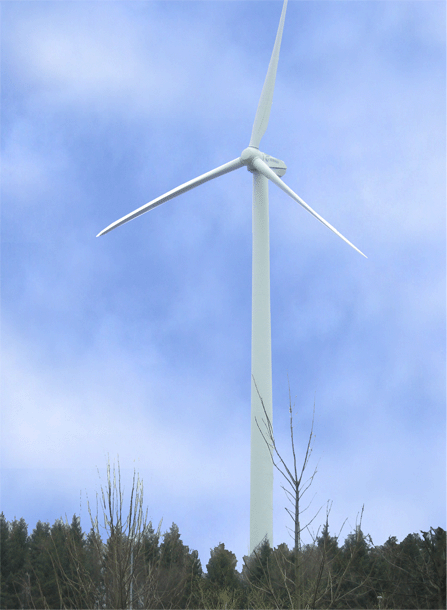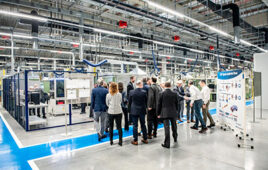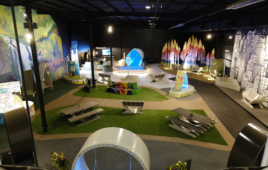By John Gyorki, Editorial Director
In spite of oppositions from various groups and individuals, the wind power industry is presently the fastest growing energy segment of the world economy. According to the Global Wind Energy Council (GWEC), from 2000 through the end of 2007, global wind generator capacity increased fivefold and exceeded 94 gigawatts. The majority of wind power is harnessed by large wind farms ‚“pumping‚†electricity into power grids.
Denmark is the lead producer with over 18% of its electric power generated by wind turbines. Spain and Portugal with over 9%, and Germany and the Republic of Ireland with over 6%, also rely to a great extent on wind. Currently, the U.S. with only about 1% of electric power generated by wind is growing in capacity faster than any other country. According to the AmericanWind Energy Association, new wind generators installed in the U.S. in 2007 alone increased the capacity by 45% and reached 16.8 gigawatts. But the U.S. government‚’s help is critical to increasing capacity by giving users Production Tax Credits (PTC) and accelerated depreciation. The PTC pays utilities approximately 1.9 cents for every kWh produced by wind power. However, the PTC is due to expire at the end of year 2008 unless Congress stops debating the issue and renews the credit. These credits are substantial, so without them, new installations could be slowed considerably. On the state level, the incentives include property tax exemptions, various green credits, and mandated purchases.
Wind turbine manufacturers are making large technological leaps to improve efficiency, increase power, reduce cost and maintenance expenses, and address environmental issues. AWEA data for major wind turbine manufacturers shows the following number of new turbines installed in 2007: GE Energy, 1,561; Vestas, 537; Siemens, 375; Mitsubishi, 356; and Gamesa, 242. Today, this technology has proven to be not only technically feasible and indispensible in the effort to reduce CO2 emissions, but also capable of providing affordable electricity to customers around the world.
Historically, advances in wind power generation was tied to the cost of fossil fuels. When fuel costs climb such as during the oil embargo mandated by OPEC in October of 1973, so does the interest in wind electric power. But when the price of fuel drops, so does the enthusiasm for wind-generated electricity. Today, with the cost of energy steadily increasing everyone should be getting in line to buy a wind-power generator, right? To a great extent yes, but this technology has many opponents.
Currently, wind generators are relatively expensive and so is the cost to install and maintain them.

Often, the cost of wind-generated power is higher than that of energy produced by nuclear or coal-burning plants. For example, the purchase and installation of a widely used 1.5-megawatt turbine generator might cost over $2 million. Another obvious disadvantage is that no power is generated when the wind does not blow. So, a wind generator used as the sole source of power might not be suitable for critical applications such as water supply sources for municipalities. Energy storage and power back-up systems have to be added, which further increase the cost.
Lastly, selecting the optimum site for installing turbines and sizing power output depend on the application and are critical issues to consider for keeping costs low. Also, wind patterns throughout the year, land acquisitions, existing power infrastructure, and environmental impact greatly affect the cost of equipment installation, maintenance, and operation. One size of wind turbine does not fit all needs. Small wind turbines with power ratings below 100 kWare best suited to provide electric power to homes, farms, and remote installations. Mid-range units, 100 to 500 kW, are a good choice for schools and villages and are often connected to distributed-power and hybrid systems. The largest, 500 kWto 5 MWturbines, are installed on land and offshore, arranged on large wind farms, and usually connect to distributed power systems.
For more information:
AWEA, AmericanWind Energy Association
http://www.AWEA.org
GWEC, GlobalWind Energy Council
http://www.gwec.net
The US Department of Energy Office of Energy Efficiency and Renewable Energy http://www.eere.energy.gov
.:Design World:.
Filed Under: Green engineering • renewable energy • sustainability, Energy management + harvesting





Tell Us What You Think!